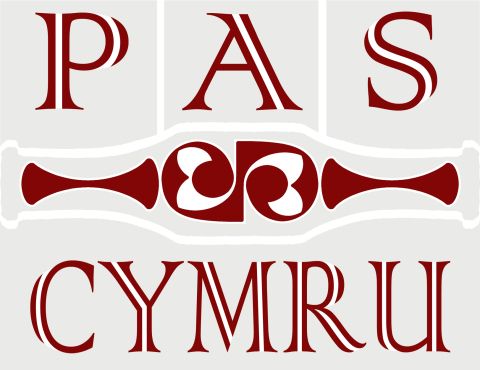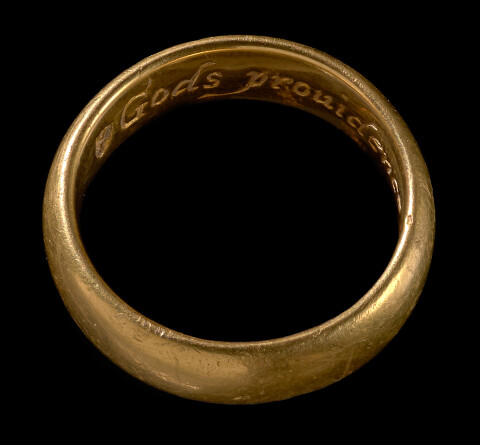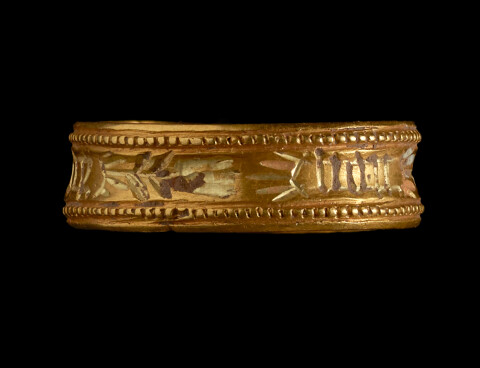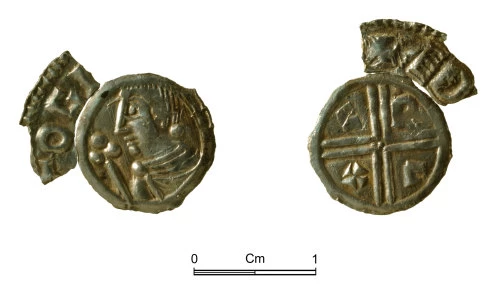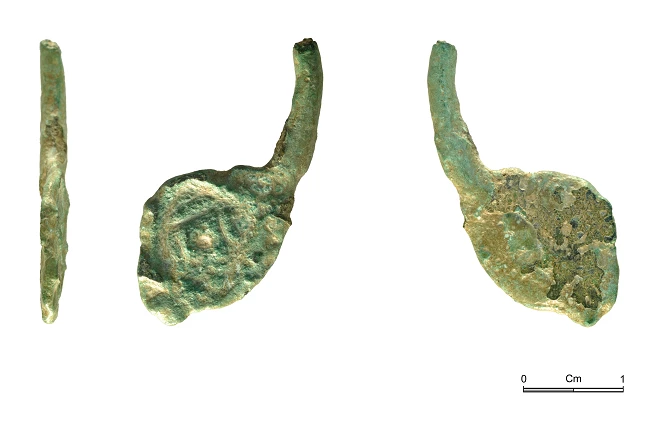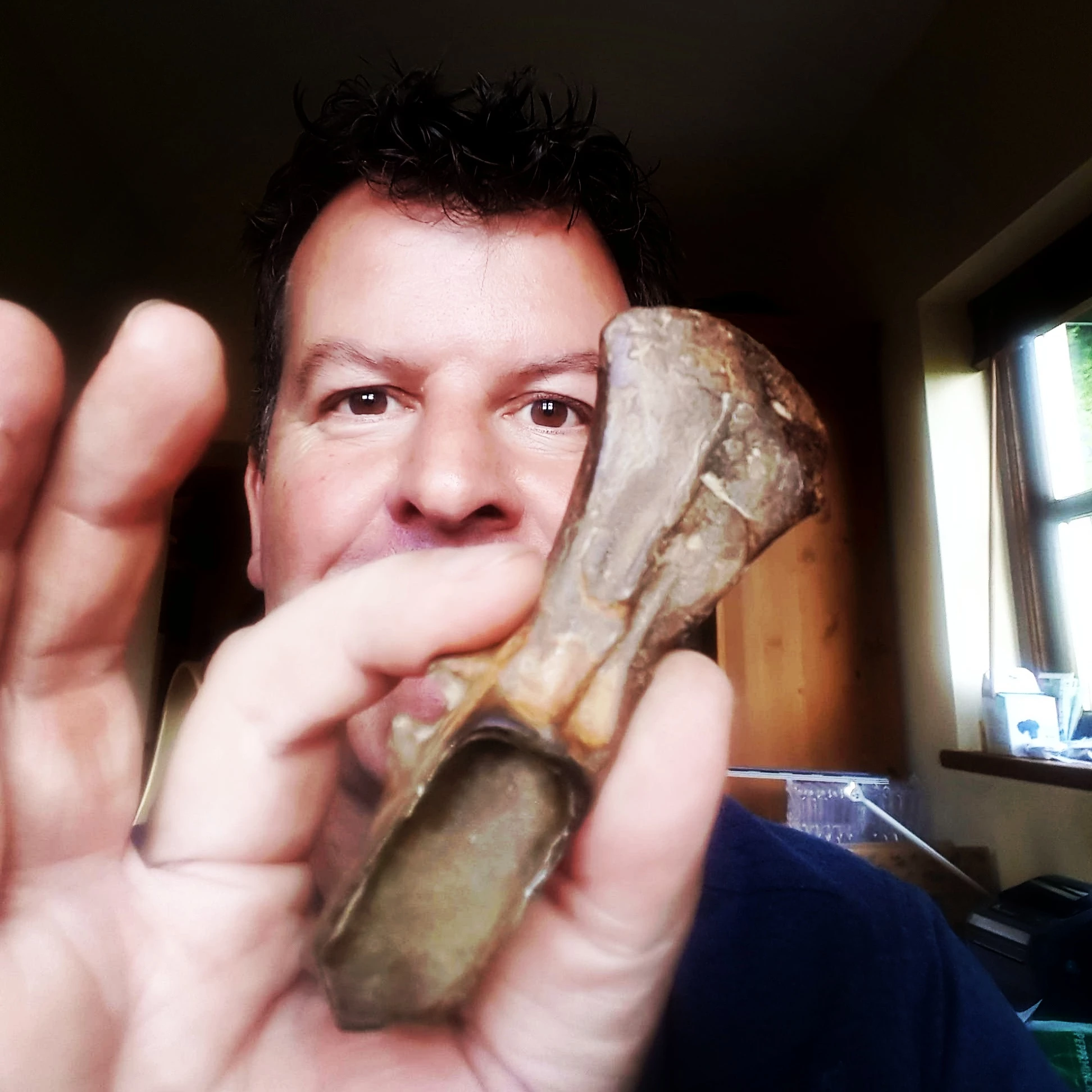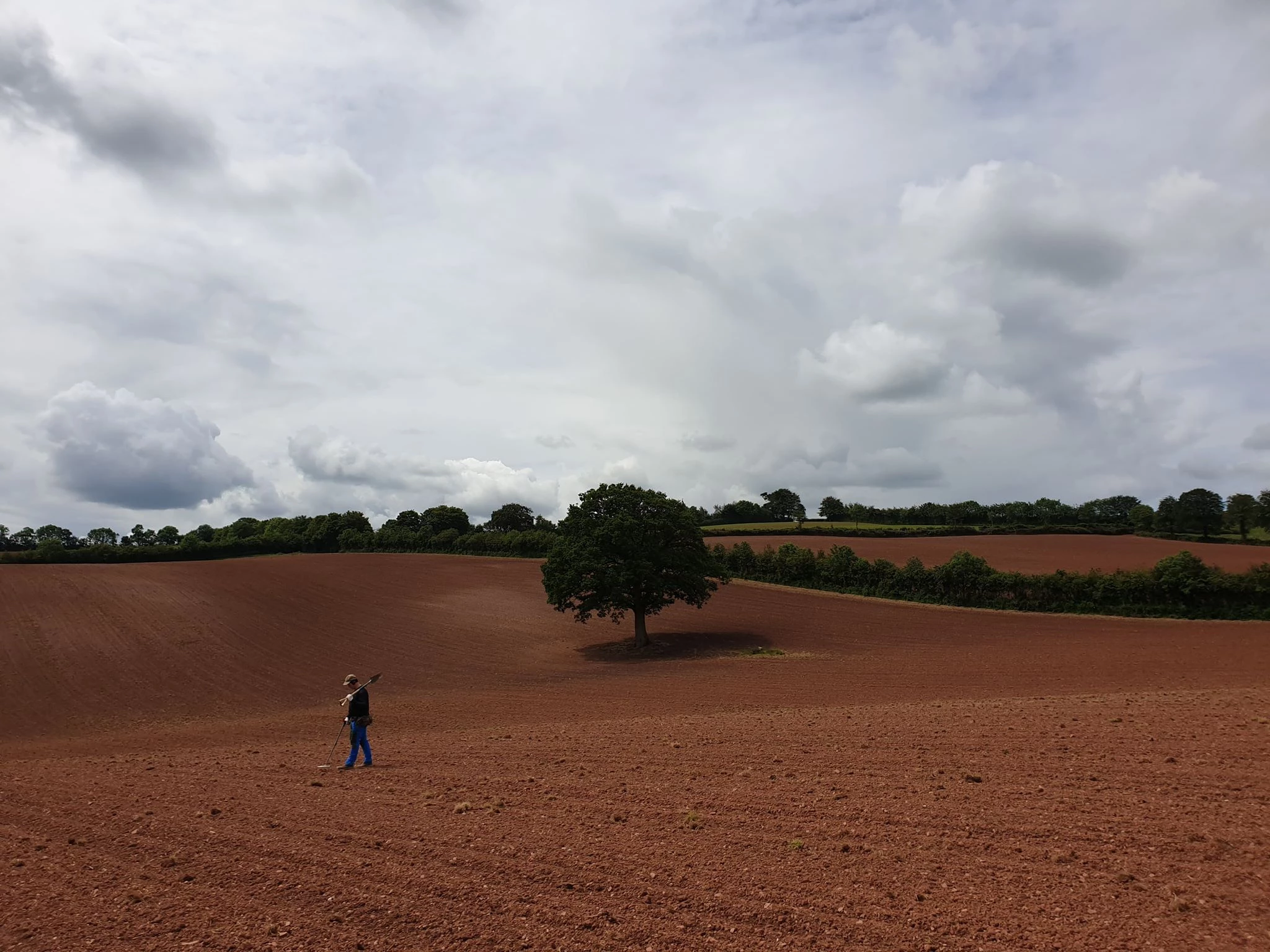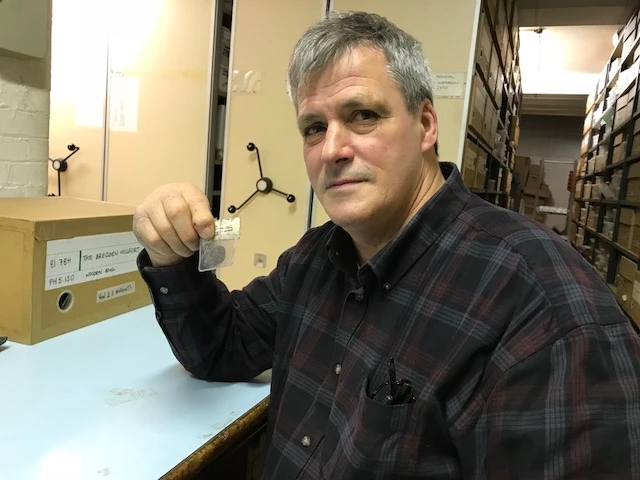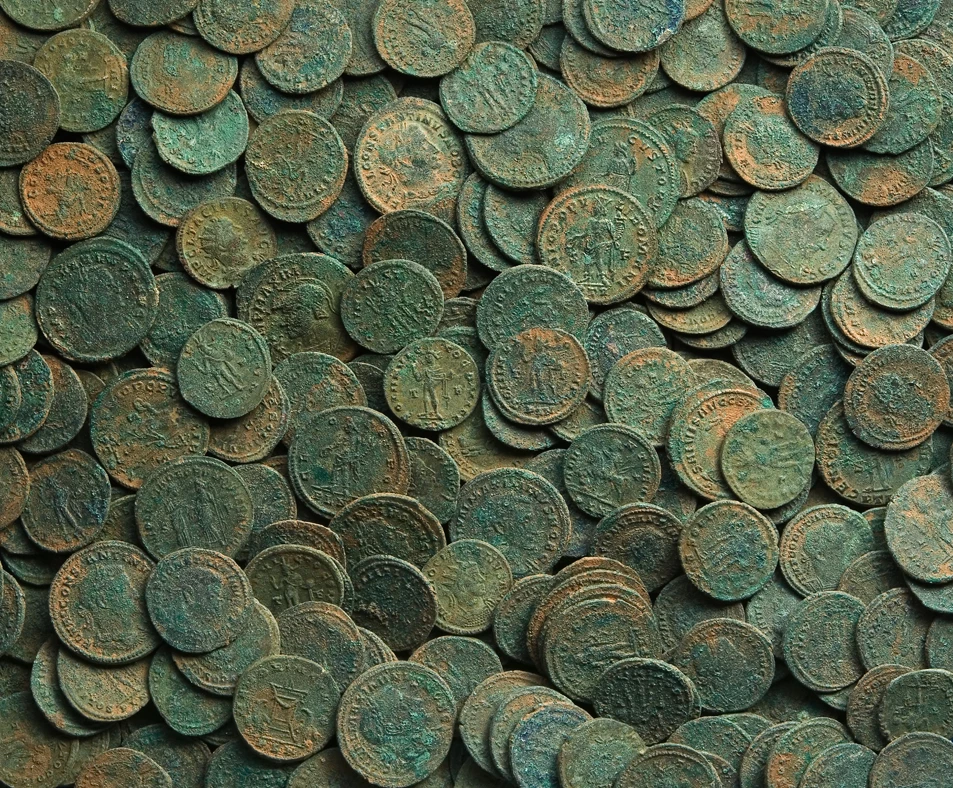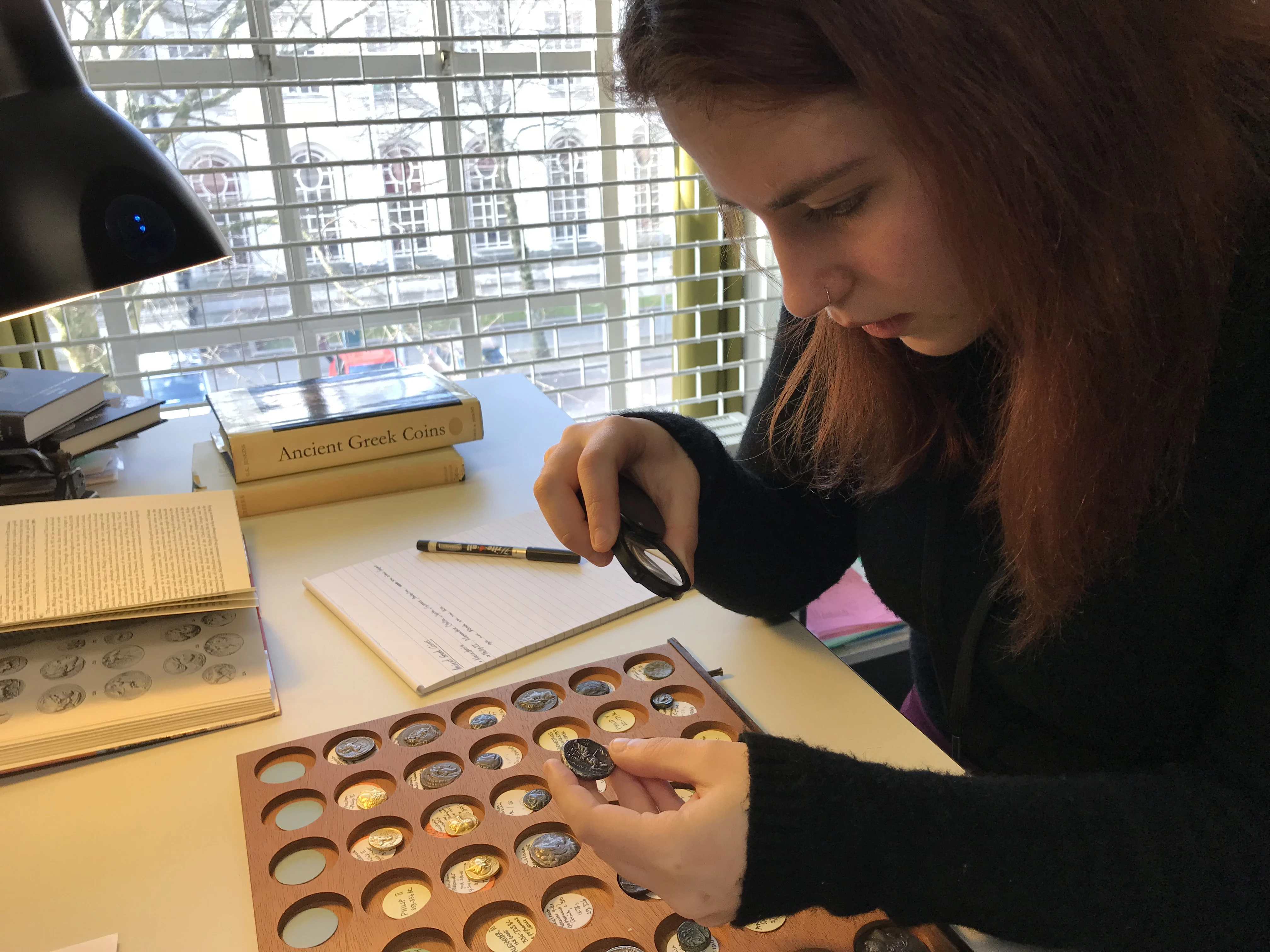Secret Messages of Love: Archaeological Finds of an Amorous Kind
, 14 February 2024
Last year, 77 finds from across Wales, all over 300 years old, were reported as treasure. My favourite treasure cases are the ones that include jewellery, especially rings. Yes, they are beautiful little objects, but they are also very personal items each with a story to tell.
I often wonder how these prized possessions end up in buried in the ground. Perhaps lost on a countryside stroll, the owner only realising with a jolt of panic once they have returned home. An argument between lovers perhaps, resulting in a ring being thrown across fields in a fit of rage. Or the remembering of a loved one with the private placing of the ring at a shared special place.
Love, in one form or another, is the common theme here, so to celebrate Valentine’s Day let’s take a closer look at some of the rings recently declared treasure in Wales.
A gold posy-ring dating from the late 1600s to early 1700s (treasure case 21.26 from Esclusham Community, Wrexham). The inscription inside reads ‘Gods providence is our inheritance’.
Posy rings were used to communicate secret messages of love, faith and friendship between the giver and the recipient. The wearing of hidden words against the skin offering a poignant, intimate connection.
A medieval gold fede or betrothal ring, decorated with engraved leaves and flower heads (treasure case 21.14 from Bronington Community, Wrexham).
The inscription on the outer surface reads ‘de bon cuer’ which means ‘of good heart’. The ring forms part of a hoard of coins and finger-rings dating to the Wars of the Roses during the later 15th century.
A gold finger ring, dated 1712, (treasure case 19.41 from Llanbradach and Pwll y Pant Community, Caerphilly).
The initials A. D. and E. P. are inscribed either side of two joined hearts, representing the names of the couple betrothed or married.
Remember to keep an eye on our social channels for new treasure declarations and please do check out our website to find out more.
https://museum.wales/treasure/
I’ll finish with a few FAQs about Treasure - everyone has heard of it, but what does it mean?
How is Amgueddfa Cymru – Museum Wales involved in Treasure declarations?
Curators based at Amgueddfa Cymru provide expert advice and make recommendations to Coroners on cases of reported treasure from Wales. They compare finds with the legal definition of treasure, as set out in the Treasure Act 1996 and the Treasure Act 1996: Code of Practice (3rd Revision) of 2023. We also have Portable Antiquities Scheme Finds Officers based at our museums, who work with finders, often metal-detectorists, who show their treasure and non-treasure archaeological finds, enabling them to be recorded and reported.
Why does a Coroner make the decision on Treasure cases?
The role of Coroners in treasure cases arose from the Medieval duty of the Coroner as a protector of the property of the Crown belonging to the king or queen of the day. In Middle English, the word ‘coroner’ referred to an officer of the Crown, derived from the Latin corona, meaning ‘crown’.
What happens to ‘Treasure’?
When treasure finds are declared treasure by Coroners, they legally become the property of the Crown. Finders and landowners are entitled to rewards, usually each receiving 50% of the independent commercial value placed on the treasure find. The Treasure Valuation Committee, an appointed group of experts representing the antiquities trade, museums and finder groups, commissions and agrees the values placed on treasure. Interested accredited museums may acquire treasure for their collections and for wider public benefit, by paying the agreed valuation sum placed on a find.
